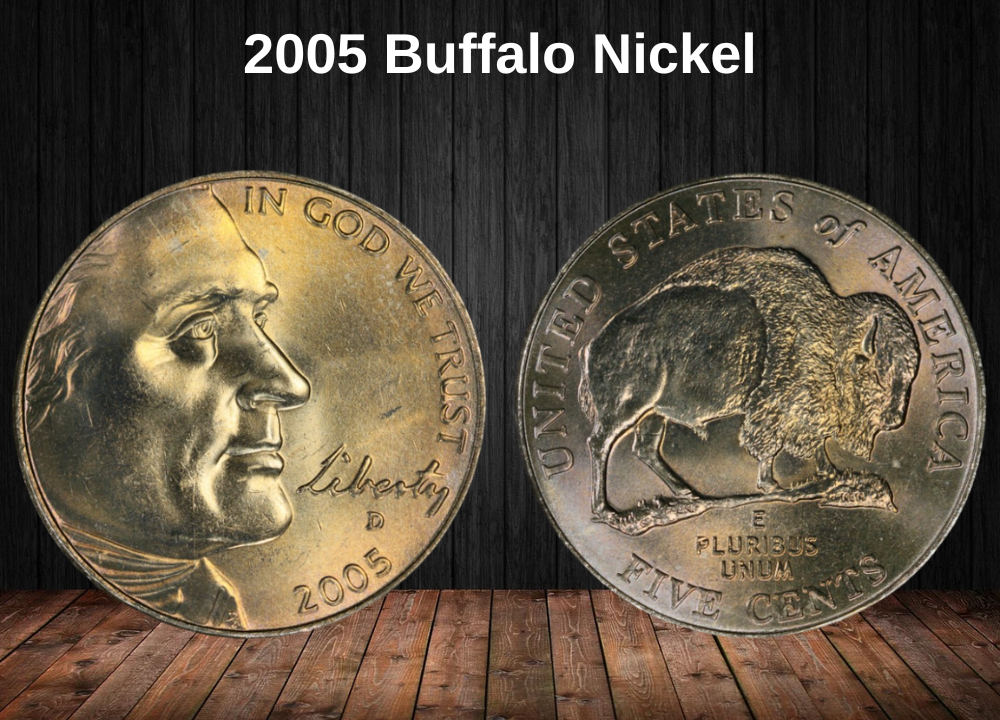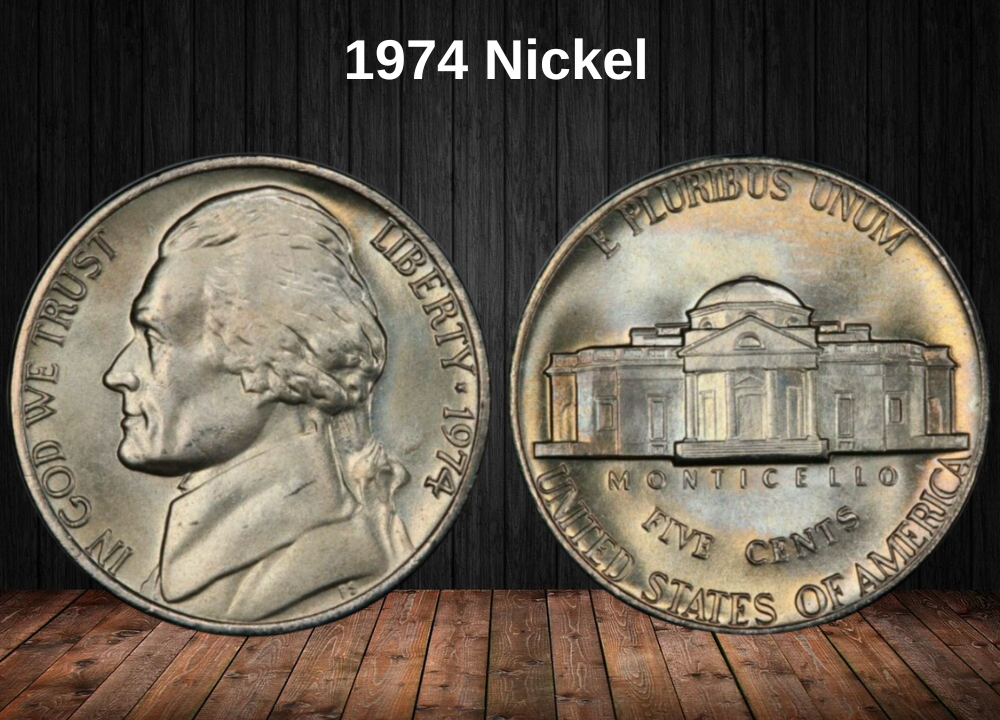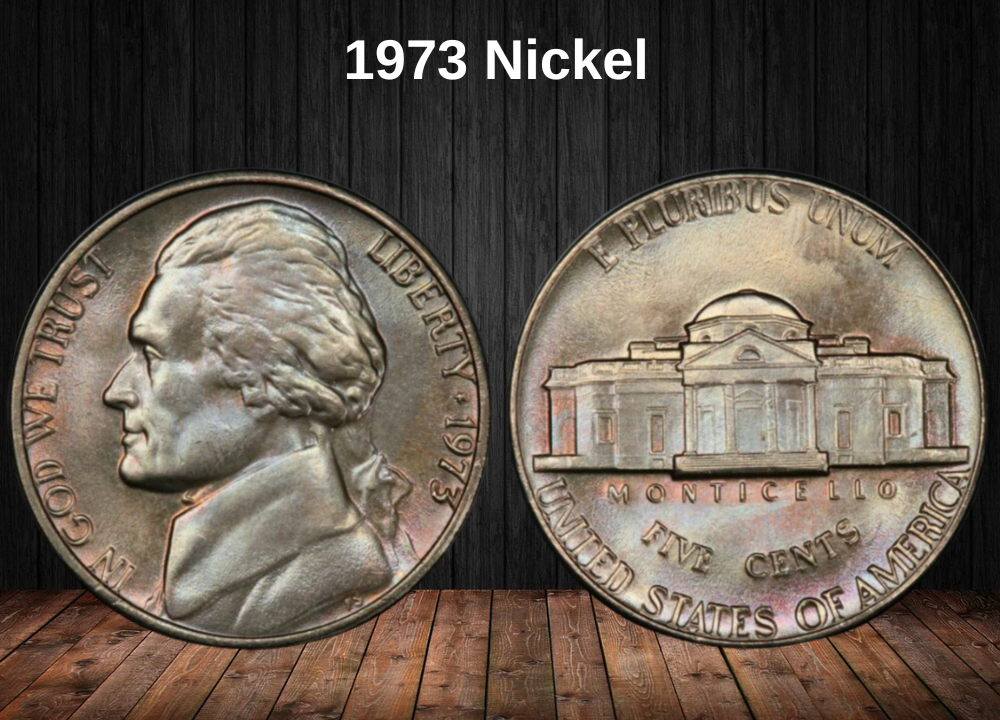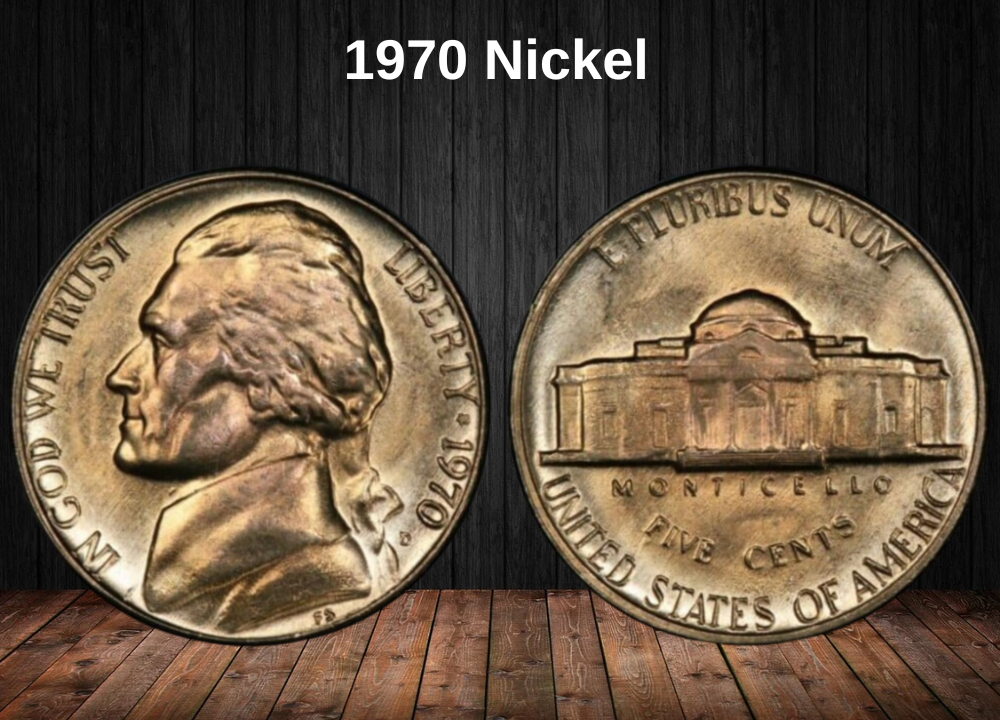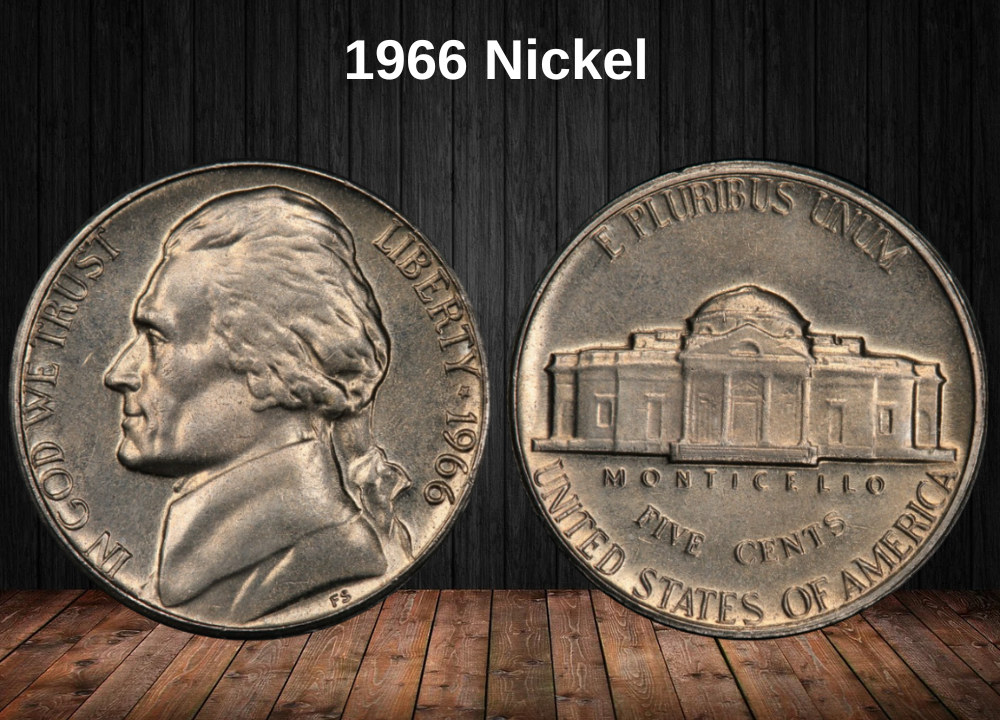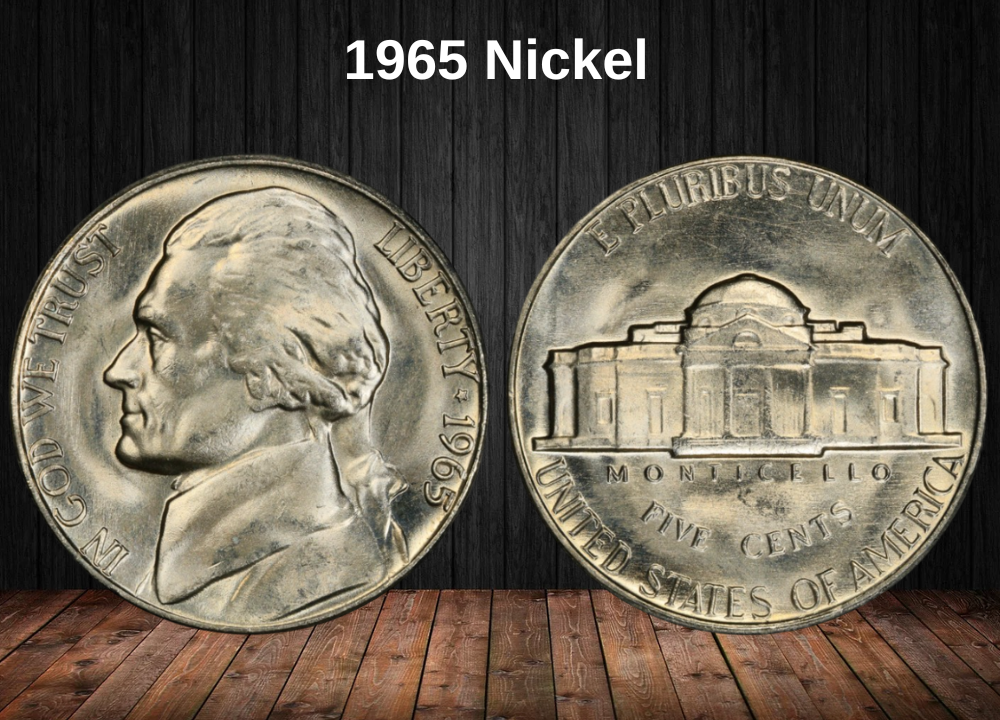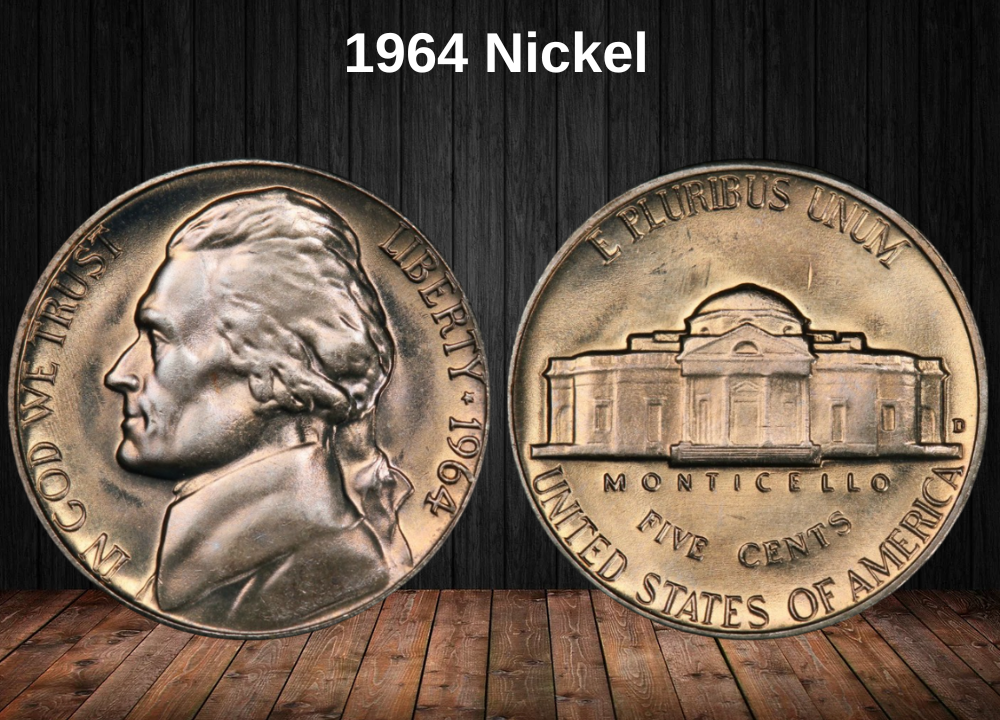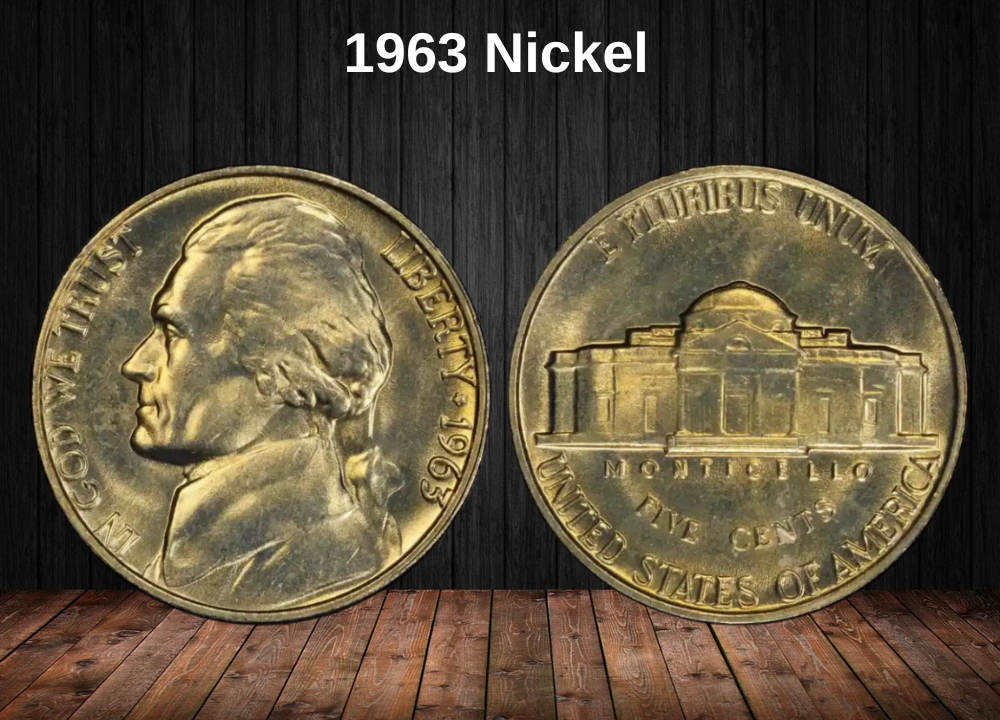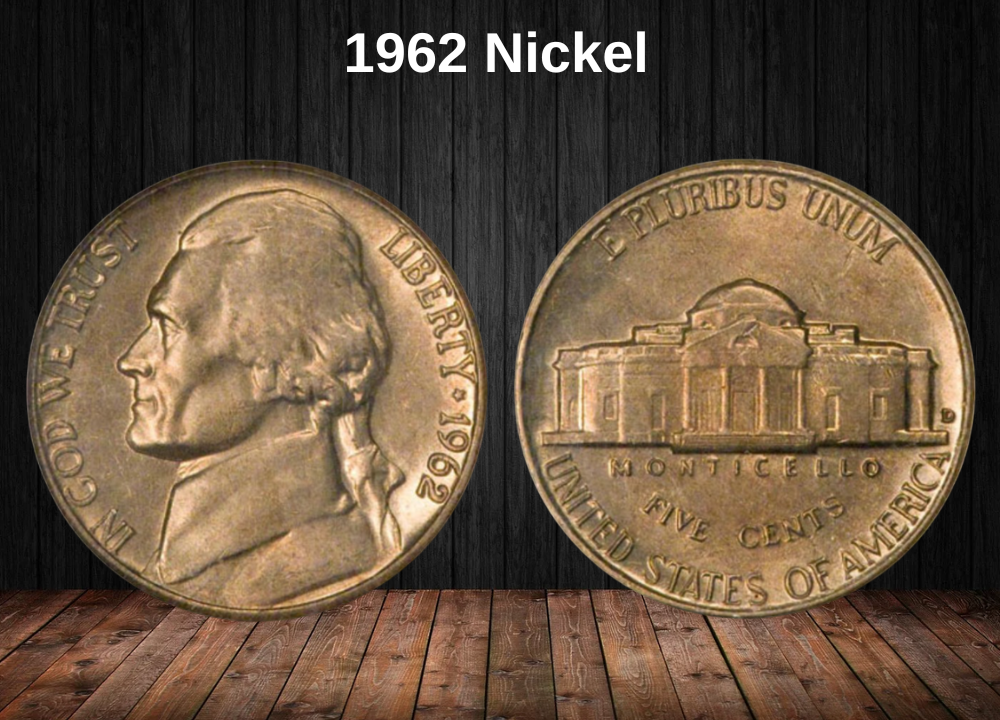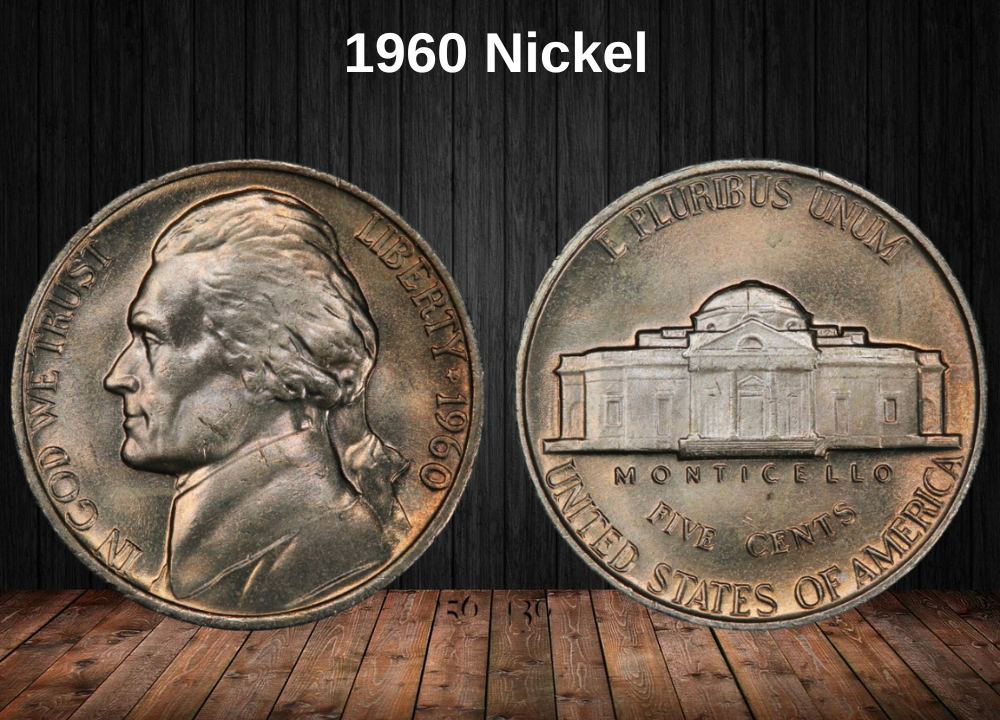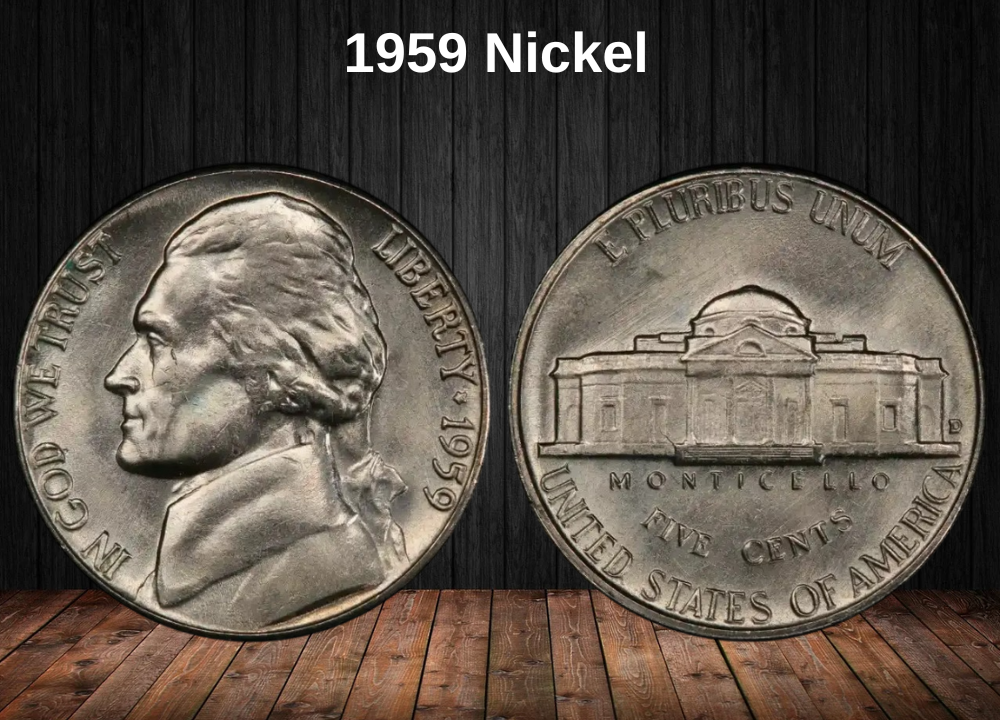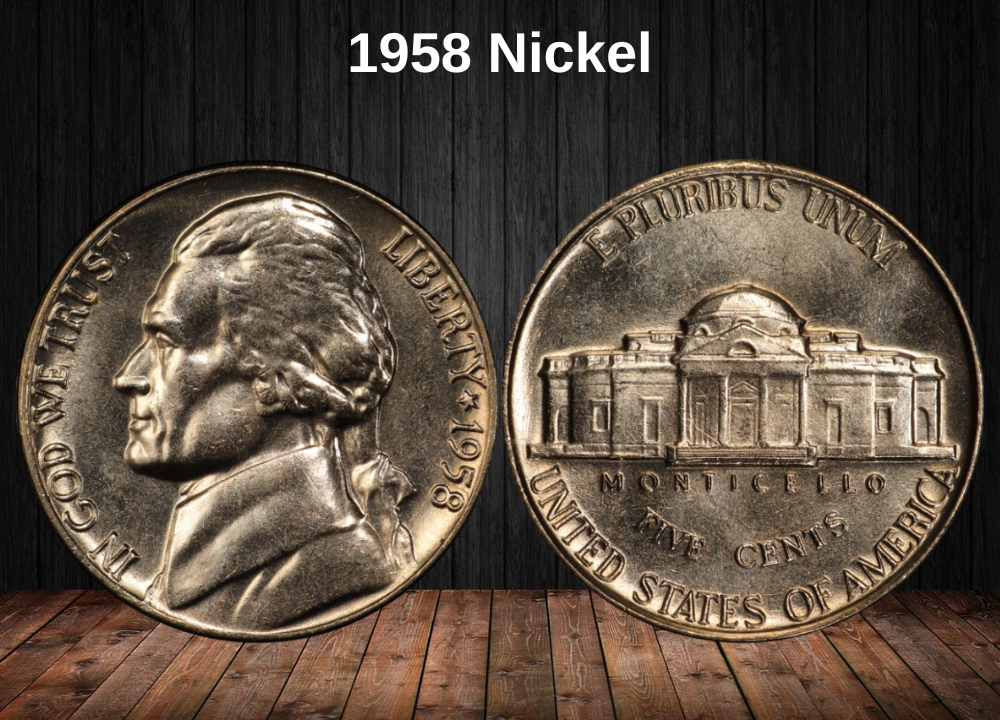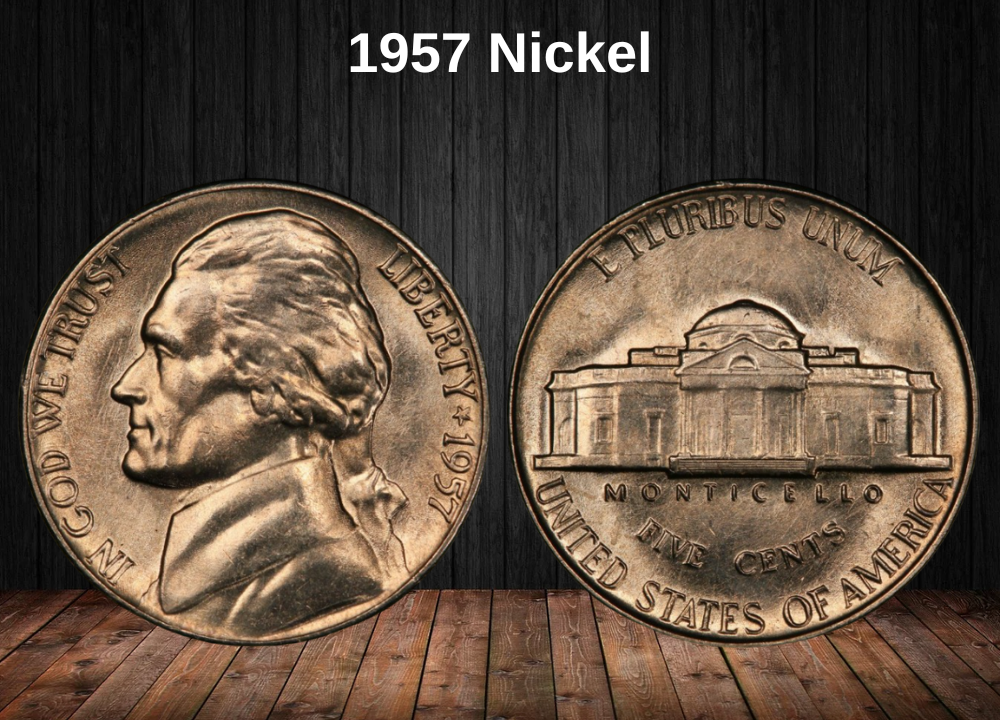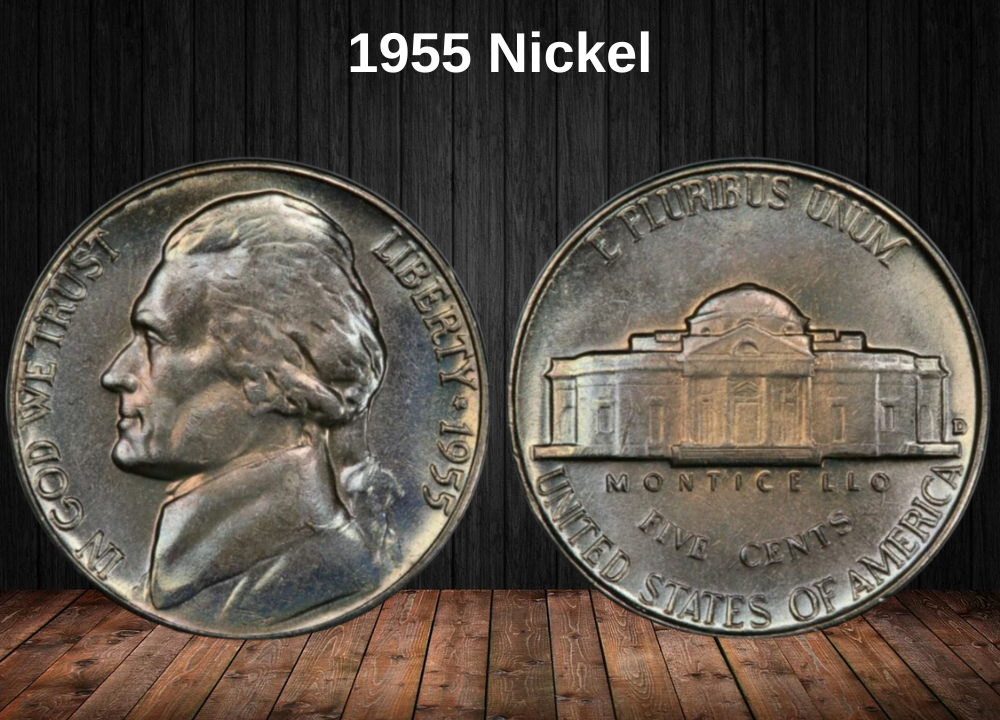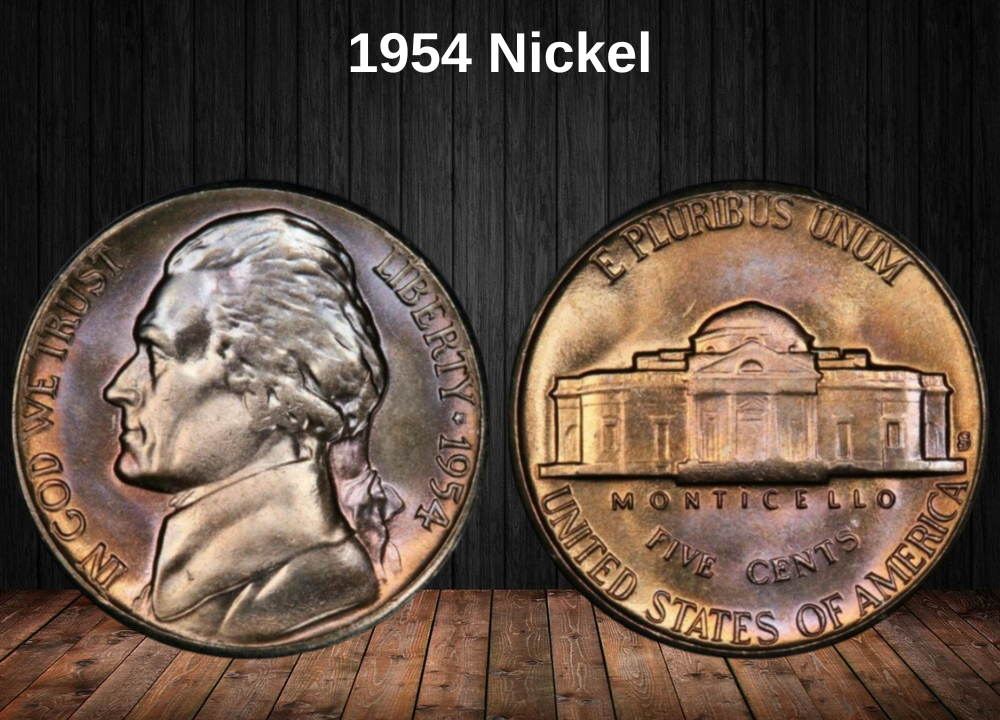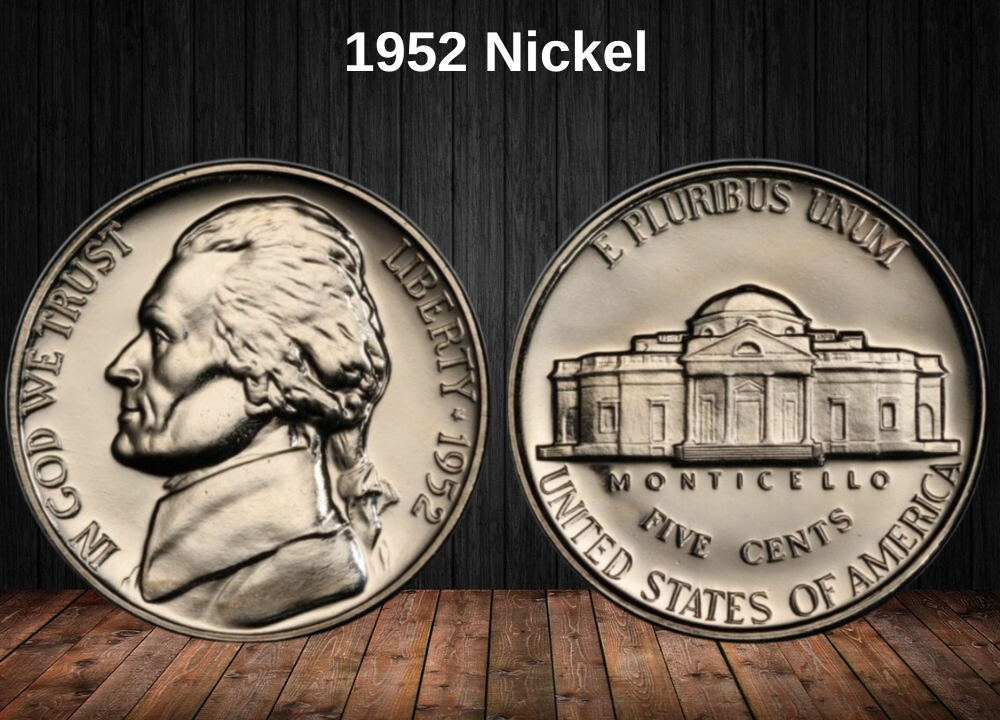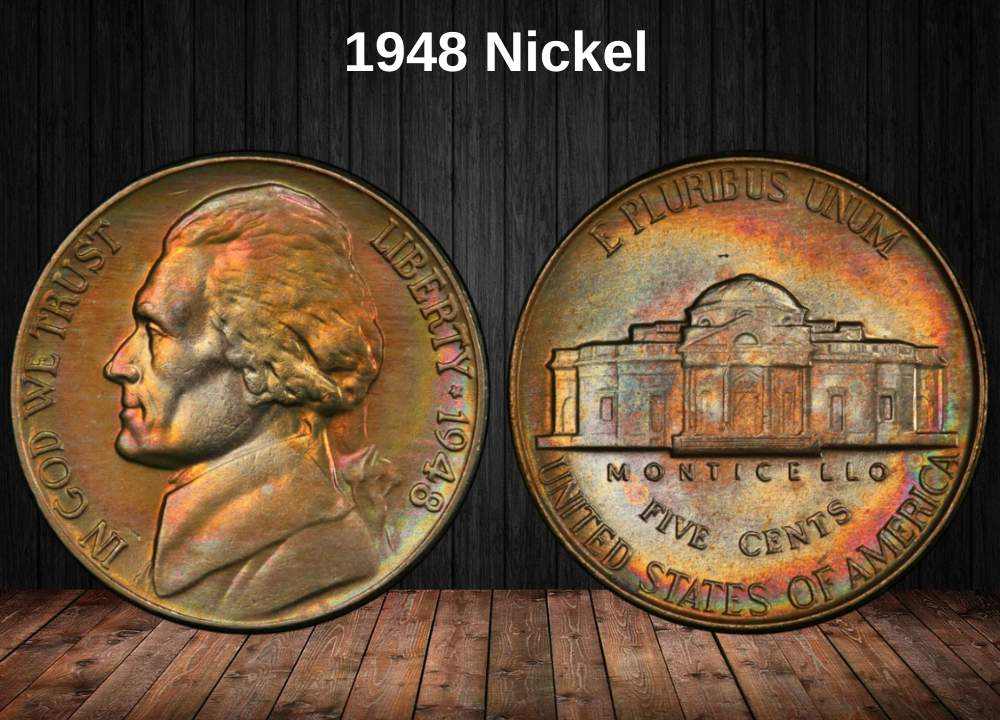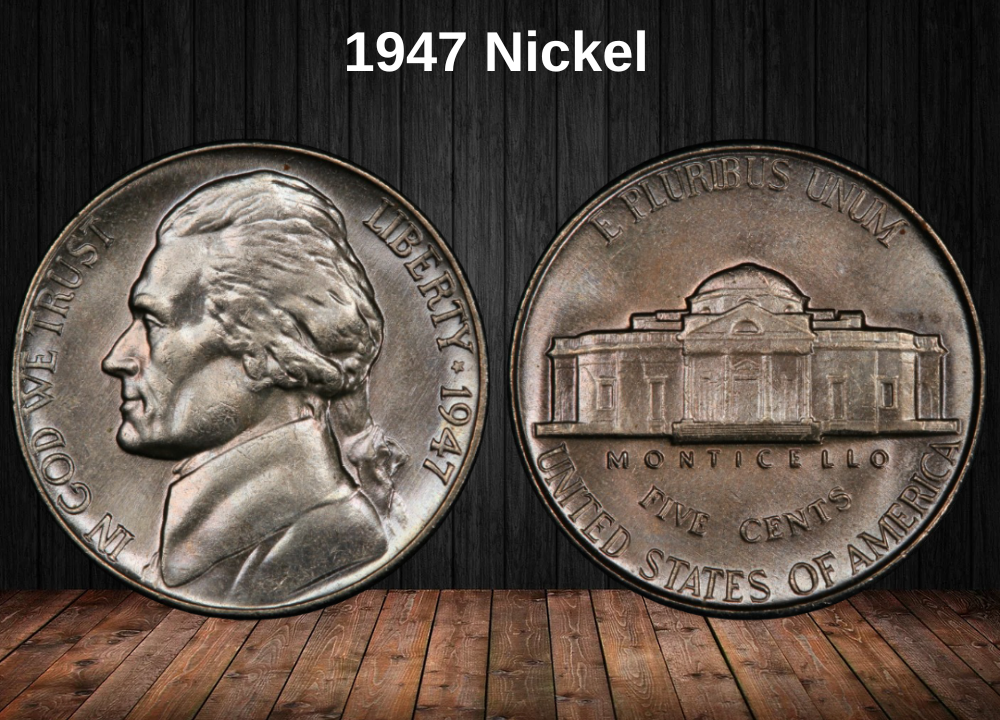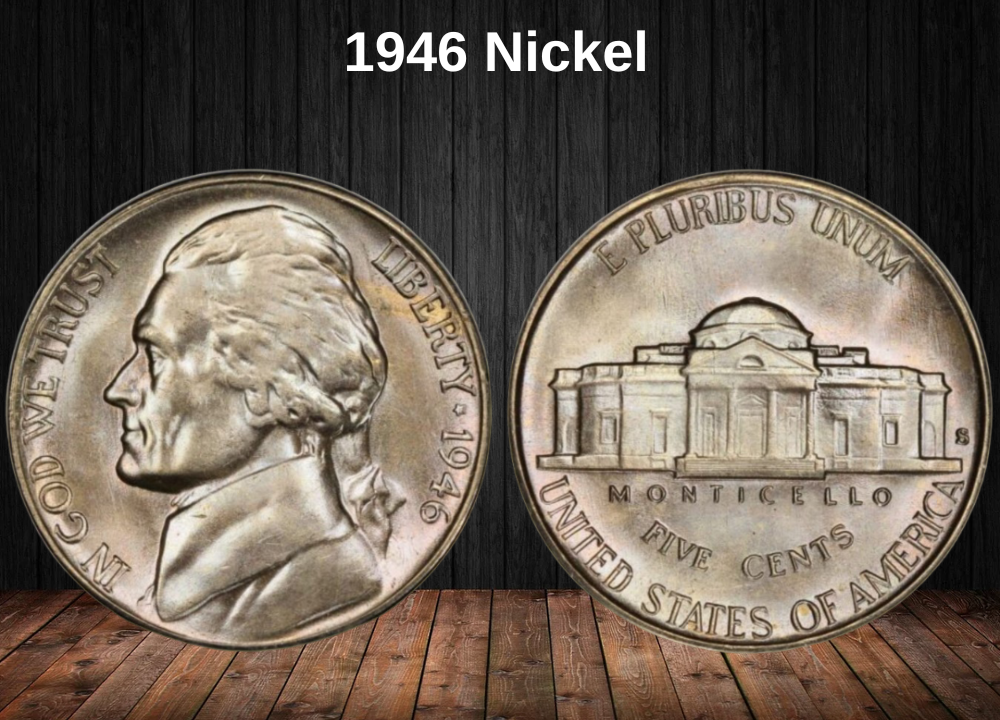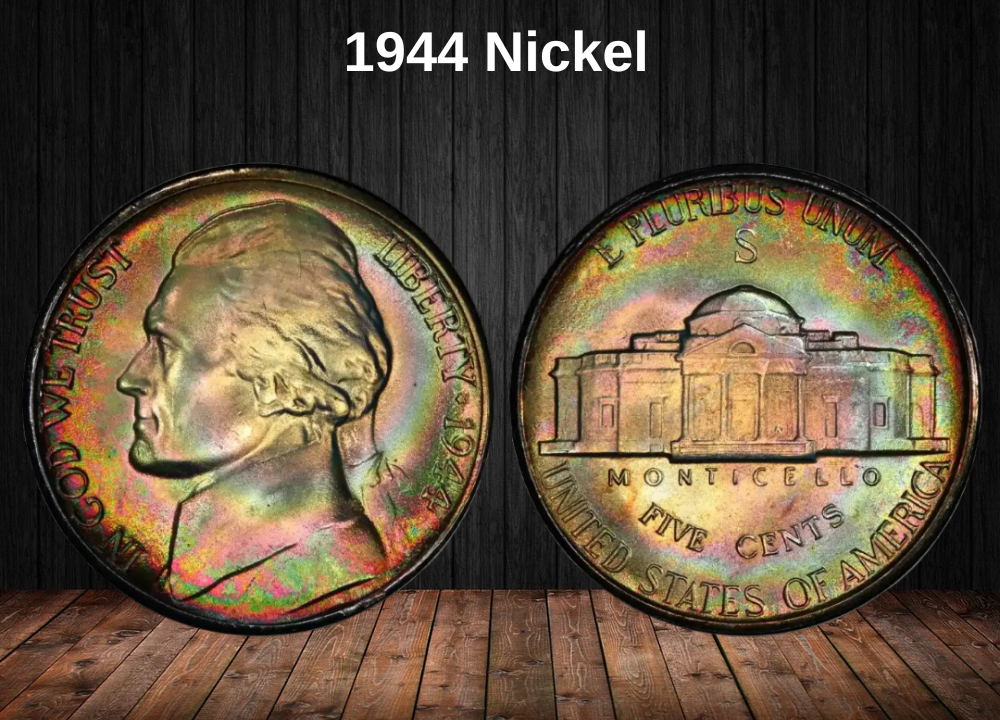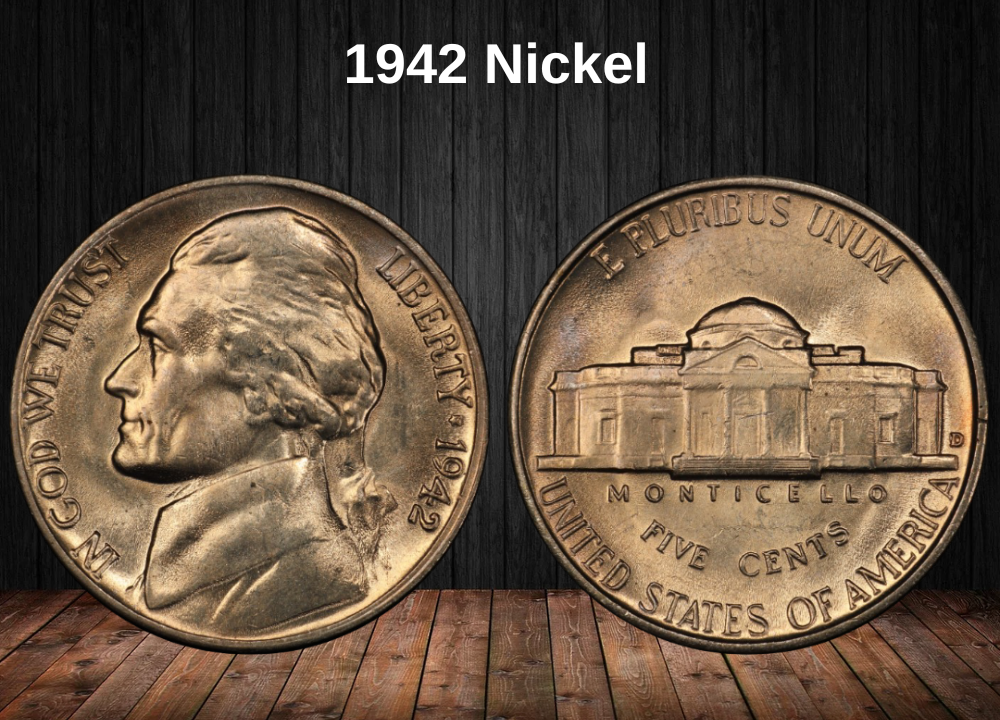The U.S. Mint began issuing Jefferson nickels in 1938, just before the outbreak of World War II. During the war, nickel—a critical material for military equipment—was redirected for use by the U.S. Army, prompting a shift in the nickel’s composition. As a result, nickels minted from 1942 to 1945 were produced with a silver-colored alloy made of 35% silver, 56% copper, and 9% manganese.
Because of their precious metal content, all wartime nickels, including the 1943 issues, have intrinsic value, even in worn condition. Their market price varies depending on mint mark, grade, and the presence of minting errors.
1943 Jefferson Nickel Value Chart
| Condition | 1943 P Nickel | 1943 P (3 Over 2) | 1943 P Doubled Eye | 1943 S Nickel | 1943 D Nickel |
|---|---|---|---|---|---|
| Good | $2.52 | $2.21 | $23 | $2.21 | $2.21 |
| Very Good | $2.83 | $2.52 | $25 | $2.83 | $2.83 |
| Fine | $3.43 | $2.83 | $31 | $3.43 | $3.43 |
| Very Fine | $4.27 | $4.53 | $38 | $4.27 | $4.27 |
| Extra Fine | $4.53 | $5.16 | $60 | $4.53 | $5.84 |
| About Unc. | $5.84 | $5.84 | $80 | $5.84 | $7.10 |
| MS 60 | $8.12 | $9.44 | $152 | $8.12 | $9.44 |
| MS 65 | $25 | $25 | $545 | $25 | $25 |
History of the 1943 Nickel (Jefferson)
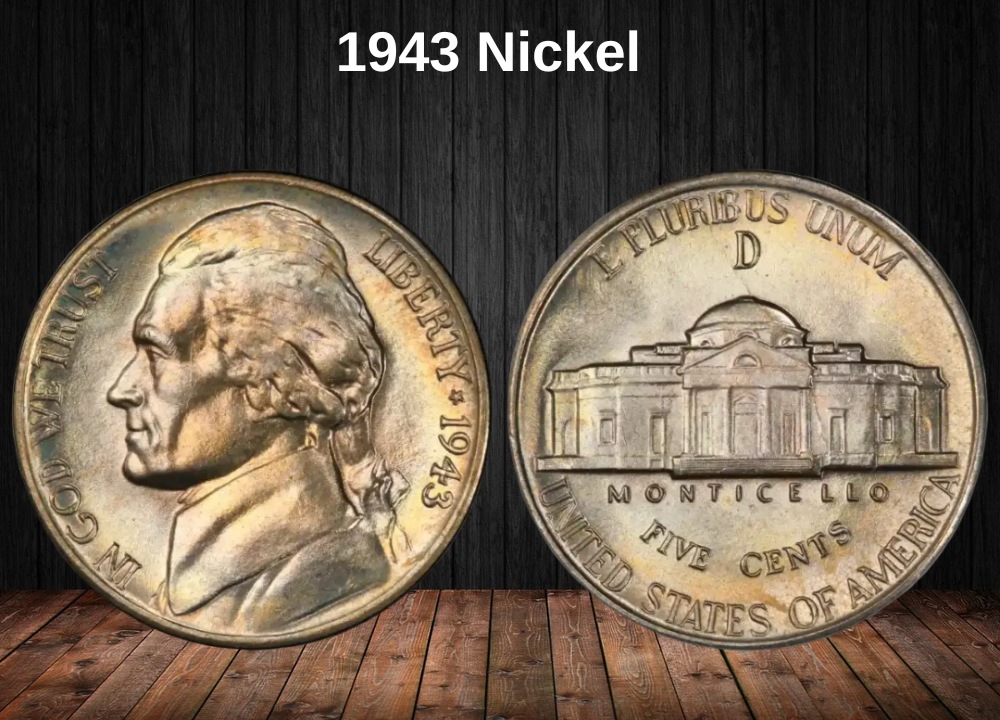
In 1938, the U.S. Mint held a design competition to replace the aging Buffalo nickel. German-American sculptor Felix Schlag emerged victorious among 390 entrants, earning $1,000 for his elegant depiction of Thomas Jefferson. Just nine years after immigrating to the United States, Schlag’s work was selected to honor the nation’s third president.
The Jefferson nickel was initially composed of the traditional copper-nickel alloy. However, by mid-1942, the U.S. military’s need for nickel during World War II led to a temporary change in composition. The Mint introduced what we now call “wartime nickels”, made of 35% silver, 56% copper, and 9% manganese. This not only conserved nickel for military use but also made these coins unique in the series.
Interestingly, the production of these silver nickels coincided with Thomas Jefferson’s 200th birthday in 1943, giving the coins added historical significance. Their limited wartime composition, patriotic timing, and precious metal content have made 1943 Jefferson nickels especially collectible today.
1943 Jefferson Nickel Mintages
| Mint Location | Type | Mintage |
|---|---|---|
| Philadelphia | 1943 P Nickel | 271,165,000 |
| San Francisco | 1943 S Nickel | 104,060,000 |
| Denver | 1943 D Nickel | 15,294,000 |
| Total | — | 390,519,000 |
Features of the 1943 Nickel (Jefferson)
Obverse of the 1943 Jefferson Nickel
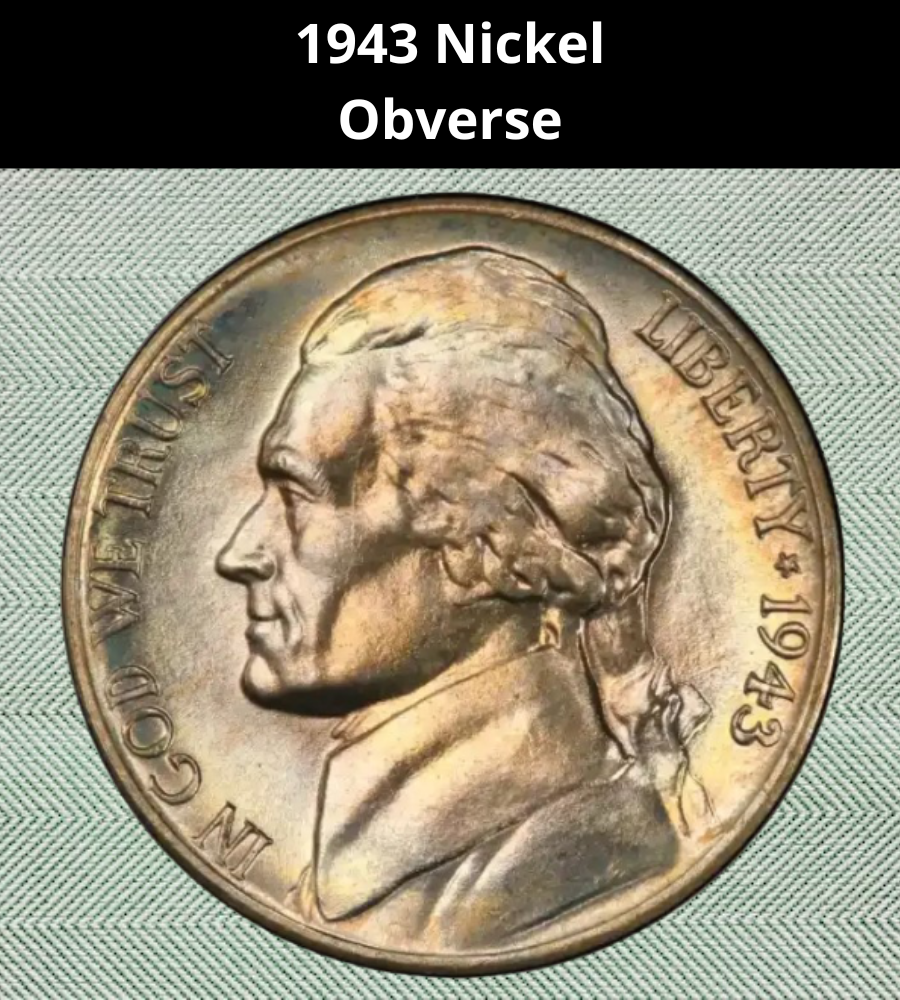
The obverse of the 1943 Jefferson nickel features a left-facing portrait of Thomas Jefferson, the third President of the United States and principal author of the Declaration of Independence.
The design is clean and stately, framed by inscriptions that honor both faith and liberty:
- “IN GOD WE TRUST” curves along the left edge.
- “LIBERTY ✶ 1943” appears on the right side, behind Jefferson’s profile, separated by a centered five-pointed star.
This design, created by Felix Schlag, remained largely unchanged for decades and has become an iconic image in American coinage.
Reverse of the 1943 Jefferson Nickel

The reverse of the 1943 Jefferson nickel features an image of Monticello, Thomas Jefferson’s iconic estate in Virginia. It’s a simple yet stately representation of his home, centered prominently on the coin.
Above the Monticello dome sits a large mint mark — P, D, or S — identifying the minting facility:
- P for Philadelphia (appearing for the first time ever on a U.S. coin),
- D for Denver,
- S for San Francisco.
Unlike traditional placement next to the Monticello steps, wartime nickels had their mint mark above the dome, making them easy to distinguish.
Beneath the building, the reverse includes these inscriptions (from top to bottom):
- E PLURIBUS UNUM
- Mint mark (P, D, or S)
- MONTICELLO
- FIVE CENTS
- UNITED STATES OF AMERICA
1943 Jefferson Nickel Specifications
| Feature | Detail |
|---|---|
| Face value | 5 cents ($0.05) |
| Diameter | 0.835 inches (21.2 mm) |
| Thickness | 0.0768 inches (1.95 mm) |
| Weight | 5 grams (0.16075 troy oz) |
| Silver weight | 0.05625 troy oz (1.75 g) |
| Composition | 35% silver, 56% copper, 9% manganese |
| Edge | Plain |
| Shape | Round |
Other Features of the 1943 Jefferson Nickel
The 1943 Jefferson nickel stands out in the series due to its wartime composition. To conserve nickel for military purposes during World War II, the U.S. Mint created a special alloy consisting of:
- 35% silver
- 56% copper
- 9% manganese
Despite the change in composition, these nickels retained the same dimensions as other Jefferson nickels:
- Diameter: 0.835 inches (21.2 mm)
- Thickness: 0.0768 inches (1.95 mm)
- Weight: 5 grams (0.16075 troy ounces)
Each coin contains approximately 0.05625 troy ounces (1.75 g) of silver, giving even heavily circulated pieces intrinsic melt value, especially when silver prices are high.
This unique silver-copper-manganese alloy was only used from mid-1942 through 1945, making these wartime nickels both historically significant and collectible.
1943 Jefferson Nickel Grading Guide
While all 1943 Jefferson nickels have inherent value due to their 35% silver content, their condition plays a key role in determining collectible worth. Collectors pay close attention to surface quality, luster, and detail preservation — especially on the Monticello steps and Jefferson’s portrait.
Although even the most worn examples hold melt value, coins in higher grades can sell for significantly more.
Grading Scale Overview:
| Grade Number | Grade Name | Description |
|---|---|---|
| 1 | Basal State-1 | Barely identifiable; heavily worn |
| 2 | Fair | Nearly smooth surfaces with faint design traces |
| 3 | Very Fair | Slightly clearer features, still mostly worn |
| 4–6 | Good | Major design elements visible but heavily worn |
| 7–10 | Very Good | More detailed but still lacking sharpness |
| 12–15 | Fine | Modest detail on Jefferson’s hair and Monticello |
| 20–30 | Very Fine | Most major elements defined, moderate wear |
| 40 | Extremely Fine | Light wear with strong detail |
| 50 | About Uncirculated | Nearly mint state with minimal signs of handling |
| 60 | Mint State (MS 60) | Uncirculated with marks or dull luster |
| 65 | Mint State (MS 65) | Strong luster, few contact marks |
| 70 | Mint State (MS 70) | Perfect coin with no flaws under magnification |
Tip: Coins with Full Steps on Monticello’s entrance are significantly more valuable, particularly in grades MS 65 and above.
Before selling or buying, always compare your coin against trusted grading standards (e.g., PCGS or NGC) to determine its true market value.
1943 Jefferson Nickel Value Guide
The 1943 Jefferson nickels are a unique part of U.S. coinage history. Produced during World War II, these five-cent coins were struck using a wartime alloy composed of 35% silver, 56% copper, and 9% manganese — a composition designed to conserve nickel for military use.
1943 P Jefferson Nickel Value

In 1943, the Philadelphia Mint struck 271,165,000 nickels, all featuring a large “P” mint mark above Monticello — a distinctive trait of wartime nickels. This year marked the first time in U.S. coinage history that Philadelphia used a mint mark on regular-strike coins.
Since no proof nickels were made from 1943 to 1950, all 1943-P nickels are regular strikes.
Circulated and Mint State Value
Even in circulated condition, 1943-P nickels carry value due to their 35% silver content:
- Circulated: $1 to $2
- Mint State (MS 60–MS 67): $3 to $60
- MS 68 examples: Often sell for over $1,300
- Auction highlight: A surprisingly modest MS 64 specimen sold for an astounding $9,400 in 2013.
Full Steps (FS) Variety
The most sought-after coins are those with Full Steps (FS) on Monticello, meaning 5 or 6 complete, visible steps — a sign of a superior strike.
- FS nickels in MS 64–MS 67: $8 to $875
- FS in MS 68: Estimated at $1,300
- Auction record: One exceptional MS 68 FS coin fetched $14,688 at LRC Auctions in 2020.
1943 D Nickel Value

In 1943, the Denver Mint produced the fewest nickels among the three facilities — just 15,294,000 coins bearing the “D” mint mark above Monticello. Despite the lower mintage, these wartime nickels remain relatively affordable for collectors.
Circulated and Mint State Value
Thanks to their 35% silver content, even circulated 1943-D nickels are worth more than face value:
- Circulated: $1 to $3
- Mint State (MS 60–MS 67): $6 to $70
- Auction record: One MS 64 example sold for $1,840
Full Steps (FS) Variety
Collectors pay a premium for Full Steps (FS) nickels — those with clearly defined steps on Monticello.
- FS in MS 64–MS 66: $7 to $110
- FS in MS 68+: Valued at around $6,500, though rare examples can reach much higher
- Auction record: A 1943-D Full Steps MS 68+ nickel fetched an astonishing $120,000 in 2025, setting a benchmark for the series
1943 S Nickel Value
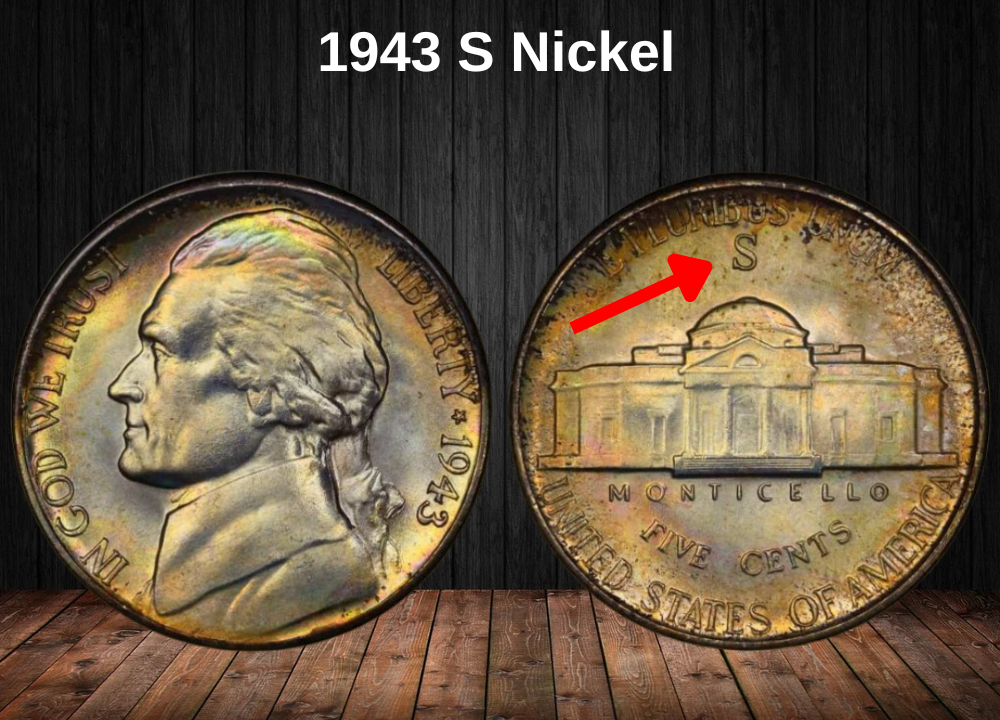
The San Francisco Mint struck a total of 104,060,000 Jefferson nickels in 1943, marking the second-highest production of that year. Despite this, the output was still significantly lower than Philadelphia’s.
In circulated condition, these wartime nickels — made with 35% silver — typically range in value from $1 to $6. For coins in mint state, prices generally fall between $7 and $36, though specimens graded MS 67 can fetch around $80.
The real value lies in coins with the Full Steps (FS) designation, indicating a sharply struck reverse with clearly defined steps on Monticello. For example:
- An MS 64 FS is usually worth around $30
- A high-grade MS 67 FS can command up to $375
However, auction results can defy expectations. In 2017, a 1943 S nickel graded MS 68 with Full Bands sold for an impressive $9,000.
Even more surprising, a standard MS 64 example — without Full Steps — broke records when it sold for a staggering $9,775 in 2006, proving that collector demand and auction timing can dramatically influence a coin’s final price.
Rare 1943 Nickel Error List
1943/2 P Nickel (3 Over 2) Overdate

The overdate error occurs when a minting date is stamped over a previous year’s date, resulting in coins showing a “3” stamped over a “2” on the obverse. The 1943/2 P nickel is a notable example of this rare variety.
Experts believe that over 1,000 of these error nickels exist, making them quite collectible. Even worn examples typically command prices ranging from $35 to $200, while well-preserved specimens can fetch between $250 and $850.
Error coins graded MS 67 are significantly more valuable, with prices ranging from $1,300 to $1,600. The most valuable known piece, graded MS 68, sold for an impressive $4,300 on May 2, 2001.
Coins with this error in pristine condition and featuring Full Steps (FS) on the reverse are especially prized. Expect to pay between $460 and $4,800 for these high-quality examples. Notably, a 1943/2 P MS 67 Full Steps nickel sold for $16,675 in 2008, highlighting the potential for surprising auction results.
Doubled Die Obverse (Doubled-Eye)
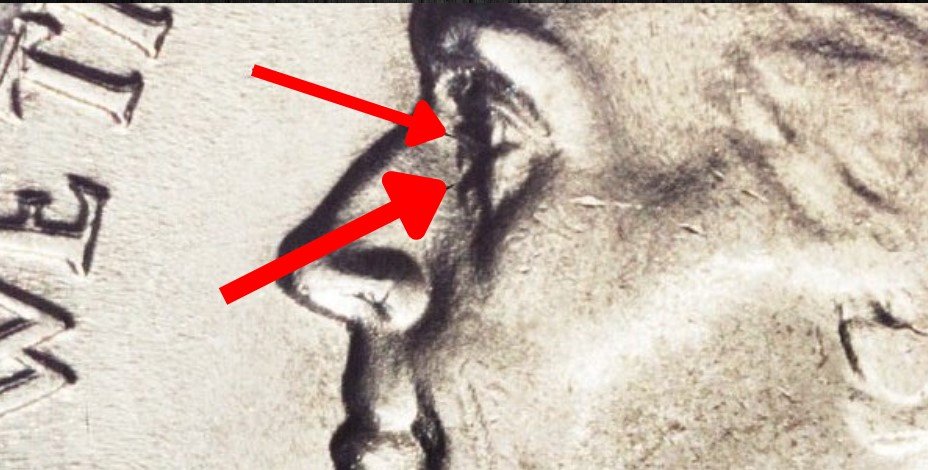
The 1943 P doubled-eye nickel error occurred when the coin shifted slightly during minting, causing the die to strike the obverse twice. This results in a visible doubling effect on Jefferson’s left eye, a distinctive and sought-after feature.
In many cases, this doubling is easily spotted by the naked eye. However, some examples require close inspection with a magnifying glass and strong lighting to reveal the subtle secondary impression just in front of the original eye.
The value of these nickels varies widely, typically ranging from $35 to $800, depending on the prominence of the doubling and the coin’s overall condition. Nickels that also boast Full Steps (FS) on the reverse command a higher premium, generally priced between $340 and $6,500.
The highest recorded sale for a 1943 DDO nickel graded MS 67 was $3,738 at a 2006 auction. Meanwhile, an MS 67 example with Full Steps fetched an impressive $11,500 in 2009.
Other Notable Nickel Errors
Beyond the rare and highly sought-after error nickels from 1943, collectors can also encounter several common imperfections associated with this series. These include:
- Off-center strikes, where the design is noticeably shifted from the coin’s center
- Nickels mistakenly struck on the wrong planchet, such as a penny planchet or even a cupronickel planchet
- The extremely rare nickel struck on an Australian six-pence planchet, a fascinating anomaly
- Re-punched mint marks (RPM), particularly the D over D (D/D) variety where the mint mark was struck multiple times with slight misalignment
- Retained lamination flaps, where a piece of metal remains partially attached due to planchet issues
- And various die cracks, which appear as raised lines or splits caused by cracked dies during the minting process
Each of these errors adds a unique story and collectible value to the nickels, making them intriguing finds for enthusiasts and numismatists alike.
Where to sell your nickel?
Now that you’re aware of your nickel’s value, you may be curious about the best places to sell it. Don’t worry: here’s a rundown of some top online marketplaces where you can conveniently sell your nickels, along with their benefits and drawbacks.
Explore the best platforms for selling nickels online (advantages and disadvantages).
FAQ about the 1943 Jefferson Nickel Value
1. What makes the 1943 Jefferson Nickel historically significant?
The 1943 Jefferson Nickel is notable because it was struck during World War II, primarily using the “war nickel” composition—an alloy of 56% copper, 35% silver, and 9% manganese—due to nickel shortages. This silver content sets it apart from other years and affects its value.
2. How does the composition of the 1943 nickel influence its collector value?
The silver content in 1943 nickels makes them more valuable than standard copper-nickel issues. Even circulated coins have intrinsic silver value, and high-grade specimens can command significant premiums, especially those with strong eye appeal.
3. What are the key mint marks for the 1943 Jefferson Nickel and their impact on value?
The 1943 nickels were minted at Philadelphia (no mint mark), Denver (D), and San Francisco (S). San Francisco “S” proofs and high-grade Denver “D” coins are rarer and typically more valuable. Mint mark placement and clarity also influence collector interest.
4. Are there known varieties or errors in the 1943 Jefferson Nickel series?
There are minor known varieties, including doubled dies and die cracks, but no widely recognized major error coins. Some varieties related to mint mark positioning or minor die anomalies can carry premiums if verified.
5. What is the typical price range for 1943 Jefferson Nickels in various conditions?
In circulated condition, 1943 nickels often sell for around $1 to $5 due to silver content. Uncirculated coins can range from $20 to over $100 depending on mint mark and grade. Proof coins, especially from San Francisco, can command several hundred dollars.
6. How did wartime production affect the strike quality of 1943 nickels?
Wartime resource constraints sometimes led to softer strikes and less consistent quality, particularly in lower mintage mint locations. However, many coins still exhibit sharp details, especially proofs and high-grade uncirculated examples.
7. What should collectors look for to verify authenticity and condition of a 1943 Jefferson Nickel?
Collectors should check the silver content through weight and magnetic tests, inspect mint marks carefully, and watch for cleaning or damage that can reduce value. Professional grading services provide authentication and help protect investment value.

